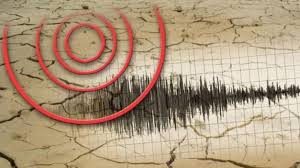
As OK Energy Today has been reporting on the nearly-daily number of small earthquakes in Oklahoma, another study by the U.S. Geological Survey concluded those earthquakes triggered by fracking are “pervasive” in the state.
A study by the U.S. Geological Survey and other scientists has found that earthquakes triggered by the specific practice of hydraulic fracturing are “pervasive” in Oklahoma.
Even as E and E News reported about the study, the latest earthquake in the state occurred late Wednesday night. It measured 2.5 magnitude at a depth of about 2 and a half miles and the epicenter was located 7 miles west of Guthrie in Logan County.
The USGS put the time at 10:33 p.m. and was only 2 miles northeast of the community of Indian Springs.
Here’s how E and E news reported the study.
The researchers linked fracking, by location and timing, to 667 earthquakes of magnitude 2 or greater, with the largest being magnitude 3.5. They linked bursts of seismicity to fracking at 274 oil and gas wells.
“We are unaware of any surface damage that has resulted from these particular events,” said lead author Rob Skoumal, a research geophysicist at the Earthquake Science Center in Menlo Park, Calif. “The hazard posed by wastewater disposal activities in Oklahoma are likely to be more significant.”
The study, titled “Earthquakes Induced by Hydraulic Fracturing are Pervasive in Oklahoma,” has been accepted for publication in the journal JGR: Solid Earth. The team also included researchers from Miami University in Ohio.
Oklahoma officials found the report accurate, but somewhat overblown, especially the use of “pervasive” in the title.
“I would argue that hydraulic fracturing seismicity is not exactly pervasive,” said Oklahoma Geological Survey seismologist Jake Walter. He said his agency’s research supports the study’s results, “but we really see only something like less than 4 percent of hydraulic fracturing operations create an earthquake.”
Quakes from fracking tend to be small. But there have been large ones. A magnitude 4.6 quake linked to fracking shook a remote area in British Columbia in 2015. According to a study cited in the USGS report, that was topped in 2016, when fracking in the Sichuan Basin of China appears to have triggered a magnitude 4.7 quake.
The swarms of earthquakes in recent years in Oklahoma have generally been linked to wastewater disposal wells rather than fracking. Oklahoma’s largest recorded quake, a magnitude 5.8 near Pawnee in 2016, has been linked to disposal (Energywire, Sept. 8, 2016).
But scientists had linked a small number of small quakes as far back as 2011 (E&E News PM, Nov. 2, 2011).
Now, as drilling and fracking ramp up in two prolific plays west of Oklahoma City called the SCOOP and the STACK, researchers are finding that earthquakes are being induced by fracking. Overall, the scientists found 4,499 earthquakes correlated with fracking, when including quakes as low as a magnitude of negative 0.05.
SCOOP stands for the South Central Oklahoma Oil Province, and STACK stands for the Sooner Trend Anadarko Basin Canadian and Kingfisher Counties.
The study looked at quakes from 2010 to 2016. The fracking of new wells in the SCOOP and STACK plays has gotten more intense since then, and earthquakes from it have continued.
But Oklahoma officials acted faster on frack-triggered quakes than they did on disposal-related quakes. The Oklahoma Corporation Commission in 2016 developed a protocol requiring companies to take certain steps if small quakes are detected near their “frack jobs,” starting with notification and rising to shutting down operations (Energywire, Dec. 21, 2016).
“The corporation commission has implemented a protocol and they are implementing it rather frequently,” said Jeremy Boak, director of the Oklahoma Geological Survey, who was not involved in the study.
The quakes are causing problems in Oklahoma because oil production and the westward development of Oklahoma City are encroaching on each other. Also, people are reporting that they feel quakes at magnitudes scientists don’t expect humans to notice, as low as magnitude 2. Magnitude 3 is usually considered the threshold for when quakes are felt, sometimes 2.5.
“People are upset,” Boak said. “They’re not having cracks in their walls. But things are falling off shelves.”
While many people use the term “fracking” to describe nearly all of the oil and gas production process, it actually refers to a specific part of well development when large volumes of chemical-laced water and sand are injected underground at high pressure to break open deep-rock formations and release oil or gas.
The lion’s share of earthquakes in the United States strong enough to be felt have been linked to the disposal of wastewater associated with drilling.
Typically, Oklahoma earthquakes have been counted by the number of events of magnitude 3 or greater. Annual counts, for example, usually use that threshold. There were 905 in 2015 and about 180 so far this year.






